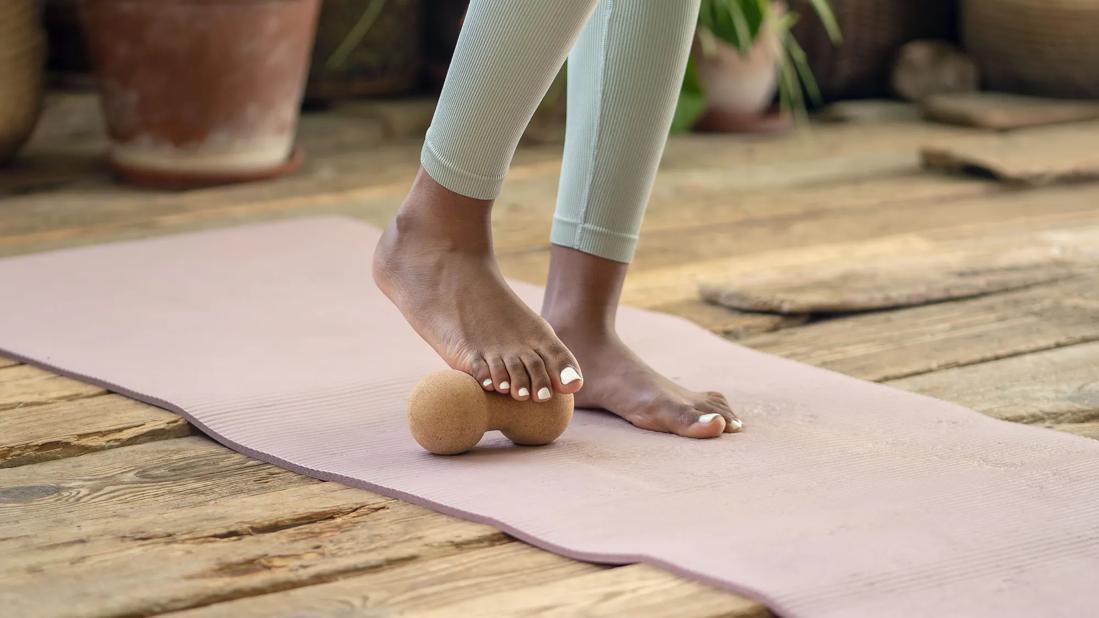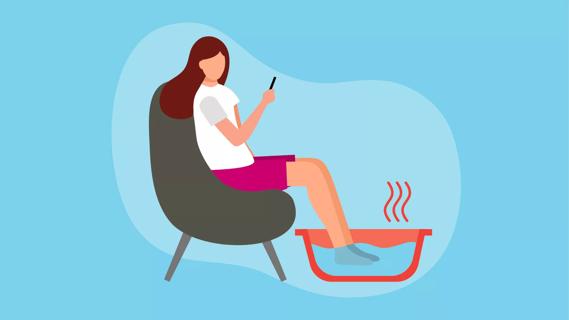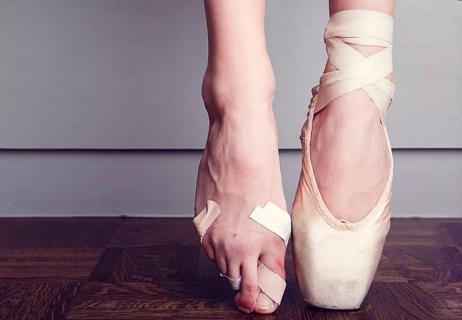Try stretching, massage, elevation and a supportive pair of shoes to help relieve foot aches and pains

If you have a “standing” job — like in retail, food, medicine or construction — you’re probably on your feet all day. And that can be a real pain in the … foot.
Advertisement
Cleveland Clinic is a non-profit academic medical center. Advertising on our site helps support our mission. We do not endorse non-Cleveland Clinic products or services. Policy
Standing all day may cause joint pain and stiffness in the bones of your feet, reduced circulation, fluid buildup, swelling, and tired, tight and sore muscles.
And besides your job, many other factors can contribute to foot pain when standing, like having overweight and pregnancy-related changes. The shoes you wear and the surface you’re standing on can also play a role.
“Foot pain can affect anyone who spends a lot of time standing or walking,” says podiatrist Christina Schilero, DPM. “Since switching professions is usually not an option, it can be helpful to have some go-to strategies to provide relief.”
Dr. Schilero shares some ways you can relieve foot pain after standing all day.
If your feet hurt from standing all day, you can take steps to relieve the pain. How well they work often depends on what’s causing your foot pain, notes Dr. Schilero. Here are 10 strategies to try:
Are you wearing old, rundown sneakers or stylish shoes that provide no support? A good running shoe or walking shoe can make all the difference for foot pain. Look for a cushioned footbed, arch support and a good fit.
“Shoes that are too big or small can make foot pain worse,” says Dr. Schilero.
What’s under your feet can also help. An anti-fatigue floor mat can provide an extra layer of separation between your feet and a hard floor.
Advertisement
Compression socks improve blood flow to your feet, reducing pain and swelling. For daily wear, start with light compression, increasing the pressure if needed. These nonmedical-grade stockings are widely available without a prescription.
Compression socks also come in different lengths, ranging from knee-high and above-the-knee socks to full-length tights.
Orthotics are inserts you put in your shoes to provide extra cushioning and support. You can purchase orthotics at drugstores or have them custom-made with a prescription from your provider.
A good stretch helps loosen tight muscles that can cause foot pain. Dr. Schilero recommends frequent calf stretches throughout the day, holding the stretch for 30 seconds on each side.
There are several ways to stretch your calves. The basic idea is to pull your toe toward your body to lengthen your calf muscles and Achilles tendon:
Standing in place slows down circulation in your feet.
“The best way to get your blood moving is to walk whenever you have the chance,” states Dr. Schilero.
If you can’t leave your spot, try some simple movements, such as knee lifts, calf raises or mini lunges.
Elevation helps excess fluid drain out of tissues, reducing pain and swelling. On breaks and at home, take a few minutes to put your feet up. While you’re resting, meditation can also help ease pain.
Heat and ice can relieve aching feet. Use whichever feels best for you. Hot and cold compresses, ice packs and heating pads all work well.
No need to get fancy here — a basic foot soak using Epsom salt and warm water works well.
An important note: If you have any ingrown toenails, infections or other foot issues, most podiatrists advise against foot soaks.
After a long day on your feet, a foot massage can make you feel like you’ve won the lottery. Massaging your feet improves circulation and relieves sore joints and muscles. Use your hands or a foot massager.
Rolling your foot over a tennis ball or frozen water bottle is another option. Combining cold and massage is especially helpful if you have plantar fasciitis.
A night splint is a device that holds your foot in a flexed position while you sleep, stretching your Achilles tendon.
Advertisement
“Your provider may recommend this if you’ve been diagnosed with plantar fasciitis or Achilles tendonitis,” says Dr. Schilero.
Foot pain can be a sign of a more serious condition. Talk to a healthcare provider if the pain is severe, sharp or not improving.
Dr. Schilero also recommends talking to a provider if you have any of these symptoms:
Even minor foot pain can interfere with your job and life.
“If you’re not finding relief from at-home remedies, let your provider know,” advises Dr. Schilero. “They can help get to the root of the problem and suggest additional strategies to make standing less painful.”
Advertisement
Learn more about our editorial process.
Advertisement

Try seated and standing exercises to help lengthen and strengthen the muscles that support your plantar fascia

Home remedies are unlikely to cure your contagious foot fungus — and they might even make it worse

Cramps can creep up if your shoes are too tight, you’re dehydrated or you have poor circulation

If soaking your feet, disinfecting your shoes and making lifestyle changes don’t do the job, it’s time to talk to a doctor

Genetics, hormones, medications and stress are just a few reasons your feet could be extra funky

Footwear that offers cushioning plus heel and arch support can help you relieve and manage symptoms

Except in certain medical scenarios, foot health experts rarely recommend foot soaks

Poorly fitting footwear and overuse injuries can knock you ‘off pointe’

Start having sex about 72 hours before ovulation, then at least every other day during your fertile window

Attachment theory suggests that your earliest relationships shape connections throughout your life

It isn’t a recognized mental health disorder, but research shows that problematic social media use can negatively affect your mental health, self-esteem and sleep